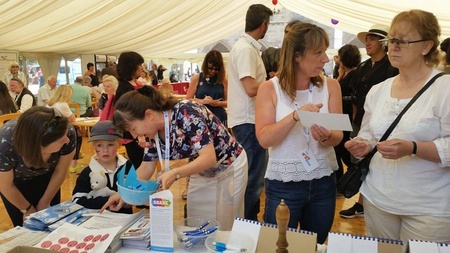Our Health Services Research Unit’s public engagement group were delighted to participate in the University’s May Festival again this year. Our team of public engagers took to the Marquee Tent on Saturday and Sunday to randomise festival-goers to mint or fruit polos. We invited volunteers to select a coloured ball from a container that obscures options to show random, blinded allocation (colour representing ‘treatment arm’), which determined the flavour of sweet they received. This allowed us to demonstrate the concept of ‘randomisation’ to treatment as would occur in a clinical trial. Randomisation is a methodology first introduced by clinical trials pioneer James Lind in 1747 to find a cure for sailors suffering with scurvy. The method has been adapted since and adopted as ‘gold standard’ for clinical trials of drugs, surgeries and other therapies. It is an essential component that allows conclusions to be drawn about direct causation of outcomes. We use randomisation across our work at the Unit and it was very exciting to engage others with it! We also ran a ‘treasure hunt’ throughout the marquee, which we used to represent ‘follow up’ in trials – the need for participants in trials to come back at a later point post-randomisation – to allow us to report on the outcomes of treatments. Dr Heather Morgan, who co-ordinates the group, said: “There was low attrition (meaning most people who had been randomised also completed the hunt), which might have been something to do with the balloon reward at the end of our ‘trial’! It was great to see people take part in our event and to have conversations with members of the public about the work we do. It was a lot of fun and also great for teambuilding with colleagues who don’t always work directly together.” The group would like to acknowledge financial support received from the University’s Public Engagement with Research Unit’s Enabling Fund following a successful application/award.
Our public engagement team at May Festival 2017


